
How to propagate plants from cuttings
5 Minute Read
Wondering how to propagate plants from cuttings? This easy, step-by-step guide will show you how! Whether you're a seasoned gardener or just starting out, propagating plants can be a rewarding and cost-effective way to expand your garden. Not only does it offer a sense of accomplishment, but it also allows you to create new plants from your existing favouritesHow to propagate plants
Plant propagation is a wonderful way to increase your garden without spending money on new plants. By taking cuttings from existing plants, you can create unique and healthy plants that are exact genetic replicas of their parents. Several different types of plants can easily be propagated from cuttings, and we will teach you how to get started. If you're new to propagation, don't worry—it's not as difficult as it might seem. Let's get started!Supplies you'll need
• A sharp knife or pair of scissors
• A clean glass jar or vase filled with water
• Rooting hormone
• A sharp knife or pair of scissors
• A clean glass jar or vase filled with water
• Rooting hormone
Types of plants that can be propagated from cuttings
The most common type of plant propagation is done with stem cuttings. You can take stem cuttings from hardwood and softwood plants, such as roses, hydrangeas, and rhododendrons. If you’re looking for evergreen shrubs or trees, boxwoods, hollies, or magnolias make good candidates for stem cuttings. Many herbaceous perennials can also be propagated using stem cuttings. These include lavender, sage, oregano, rosemary, thyme, bee balm, and yarrow.
The most common type of plant propagation is done with stem cuttings. You can take stem cuttings from hardwood and softwood plants, such as roses, hydrangeas, and rhododendrons. If you’re looking for evergreen shrubs or trees, boxwoods, hollies, or magnolias make good candidates for stem cuttings. Many herbaceous perennials can also be propagated using stem cuttings. These include lavender, sage, oregano, rosemary, thyme, bee balm, and yarrow.

Root cuttings
Root cuttings are another type of plant propagation. This method involves taking root fragments from an existing plant and planting them in soil to create new plants. Root cuttings are best suited for woody perennial shrubs like pyracantha or forsythia; many herbaceous perennials like day lilies also respond well to root cutting propagation methods.
Root cuttings are another type of plant propagation. This method involves taking root fragments from an existing plant and planting them in soil to create new plants. Root cuttings are best suited for woody perennial shrubs like pyracantha or forsythia; many herbaceous perennials like day lilies also respond well to root cutting propagation methods.
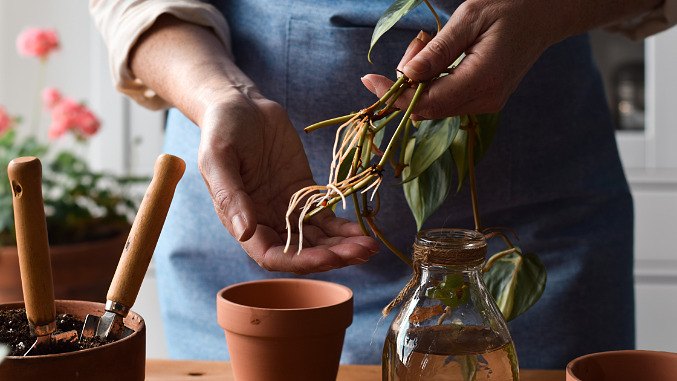
Propagating from leaves
If you have a succulent or cactus that needs propagating, then leaf cuttings might be the way to go. To propagate succulents using leaf cuttings simply remove a mature leaf from the plant and let it callous over in the air for several days before burying it in potting soil. In time it will form roots and eventually produce a new plant! Similarly, some African violets can be propagated using leaf cuttings – just remove a healthy leaf with its petiole still attached and bury it in moist soil - eventually it should start sprouting roots!
If you have a succulent or cactus that needs propagating, then leaf cuttings might be the way to go. To propagate succulents using leaf cuttings simply remove a mature leaf from the plant and let it callous over in the air for several days before burying it in potting soil. In time it will form roots and eventually produce a new plant! Similarly, some African violets can be propagated using leaf cuttings – just remove a healthy leaf with its petiole still attached and bury it in moist soil - eventually it should start sprouting roots!

Stem propagation
1. Cut a 6–8-inch stem from an existing plant using a sharp knife or pair of scissors. Make sure to cut at least 2 inches below a leaf node (the point on the stem where leaves branch off). Leaf nodes are where roots will grow from, so the more leaf nodes your cutting has, the better.
2. Fill a clean glass jar or vase with water and place your cutting in it. If you're using rooting hormone, dip the end of the cutting into the hormone before placing it in the water.
3. Place the jar or vase in a sunny spot out of direct sunlight and wait for roots to form. This can take anywhere from 1-4 weeks.
4. Once roots have formed, fill a small pot or container with perlite and plant your new cutting in it, water well.
1. Cut a 6–8-inch stem from an existing plant using a sharp knife or pair of scissors. Make sure to cut at least 2 inches below a leaf node (the point on the stem where leaves branch off). Leaf nodes are where roots will grow from, so the more leaf nodes your cutting has, the better.
2. Fill a clean glass jar or vase with water and place your cutting in it. If you're using rooting hormone, dip the end of the cutting into the hormone before placing it in the water.
3. Place the jar or vase in a sunny spot out of direct sunlight and wait for roots to form. This can take anywhere from 1-4 weeks.
4. Once roots have formed, fill a small pot or container with perlite and plant your new cutting in it, water well.

Top tips for successful plant propagation
Choose your plant cuttings wisely
The first step in propagating your plants is to choose healthy, disease-free plant cuttings. Ideally, you should choose cuttings that are 6-8 inches long and have at least 2-3 sets of leaves. Once you've chosen your plant cuttings, use a sharp knife or pruning shears to make a clean cut just below a leaf node—where the leaves meet the stem.
The first step in propagating your plants is to choose healthy, disease-free plant cuttings. Ideally, you should choose cuttings that are 6-8 inches long and have at least 2-3 sets of leaves. Once you've chosen your plant cuttings, use a sharp knife or pruning shears to make a clean cut just below a leaf node—where the leaves meet the stem.
Prepare your plant cuttings for propagation
After you've made your cuts, it's important to prepare your plant cuttings for propagation. First, remove any leaves from the bottom 2-3 inches of the stem. Next, dip the cut end of the stem into rooting hormone powder or gel. This will help encourage root growth. Finally, fill a planting pot with well-draining potting mix and water it thoroughly.
After you've made your cuts, it's important to prepare your plant cuttings for propagation. First, remove any leaves from the bottom 2-3 inches of the stem. Next, dip the cut end of the stem into rooting hormone powder or gel. This will help encourage root growth. Finally, fill a planting pot with well-draining potting mix and water it thoroughly.
Plant your plant cuttings in the potting mix
Once your potting mix is moistened, carefully insert your plant cuttings about 2 inches deep into the mix. Make sure that at least 2 leaf nodes are buried beneath the surface of the potting mix—this is important for root growth. After you've planted your plant cuttings, water them again and place the pot in a bright spot out of direct sunlight.
Once your potting mix is moistened, carefully insert your plant cuttings about 2 inches deep into the mix. Make sure that at least 2 leaf nodes are buried beneath the surface of the potting mix—this is important for root growth. After you've planted your plant cuttings, water them again and place the pot in a bright spot out of direct sunlight.
Finally, wait for your new plants to grow!
Now comes the hard part—waiting for your new plants to grow! It can take anywhere from 2-8 weeks for roots to form and new growth to appear. During this time, make sure to keep an eye on your plants and water them when the potting mix begins to dry out. With a little patience (and some TLC), you'll soon have new plants to enjoy!
Now comes the hard part—waiting for your new plants to grow! It can take anywhere from 2-8 weeks for roots to form and new growth to appear. During this time, make sure to keep an eye on your plants and water them when the potting mix begins to dry out. With a little patience (and some TLC), you'll soon have new plants to enjoy!
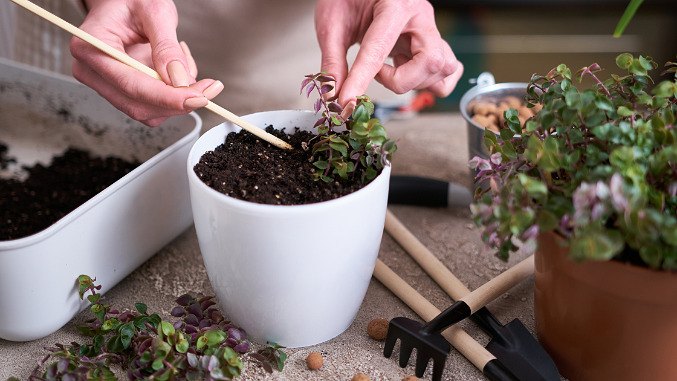
We hope this article has given you everything you need to know about propagating plants from cuttings. Just remember to choose healthy plant cuttings, prepare them correctly, plant them in moist potting mix, and give them plenty of time and attention while they're growing roots and putting out new growth. With a little bit of care and patience, you'll be rewarded with beautiful new plants in no time!
Related products
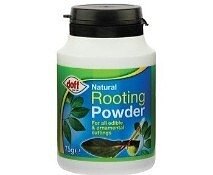
Doff Natural Rooting Powder
An easy to use rooting powder for all edible and ornamental cuttings. Ideal for use on soft, semi-hard and hardwood plants to help form new roots on cuttings.BUY NOW
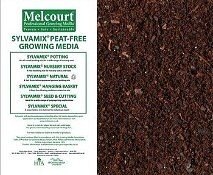
Sylvamix Seed & Cutting Compost
Melcourt Sylvamix Growing Medium is a peat free seed compost for propagation of vegetable seeds & cuttings. One of the best seed composts available in the UK.BUY NOW
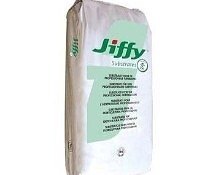
Jiffy Propagation Mix
Coir and perlite mixes make the best seed compost for your seedlings. Perlite is recommended as a growing medium for seeds and cuttings as it provides aeration and speeds up propagation.
Vipot Biodegradable 8cm Pots x10
Environmentally friendly biodegradable plant pots made of natural plant fibre obtained from the waste of annual crops such as rice husk.Life expectancy is 5 years but biodegrade within 9 - 18 months if broken down and put into waste.
BUY NOW
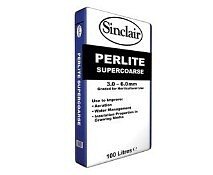
Sinclair Perlite
Super coarse
A well-draining potting medium that retains water but does not rot or hold onto nutrients. Perlite Super coarse allows lots of air around plant roots and has good insulating properties. Pest free and weed free.BUY NOW
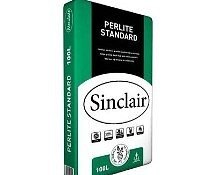
Sinclair Perlite Standard
Sinclair Perlite Standard is horticultural medium grade perlite for compost mixes to improve drainage and increase insulation. Perlite has a neutral pH and is sterile making it disease resistant.BUY NOW
Comments (0)
Why not be the first to send us your thoughts?
